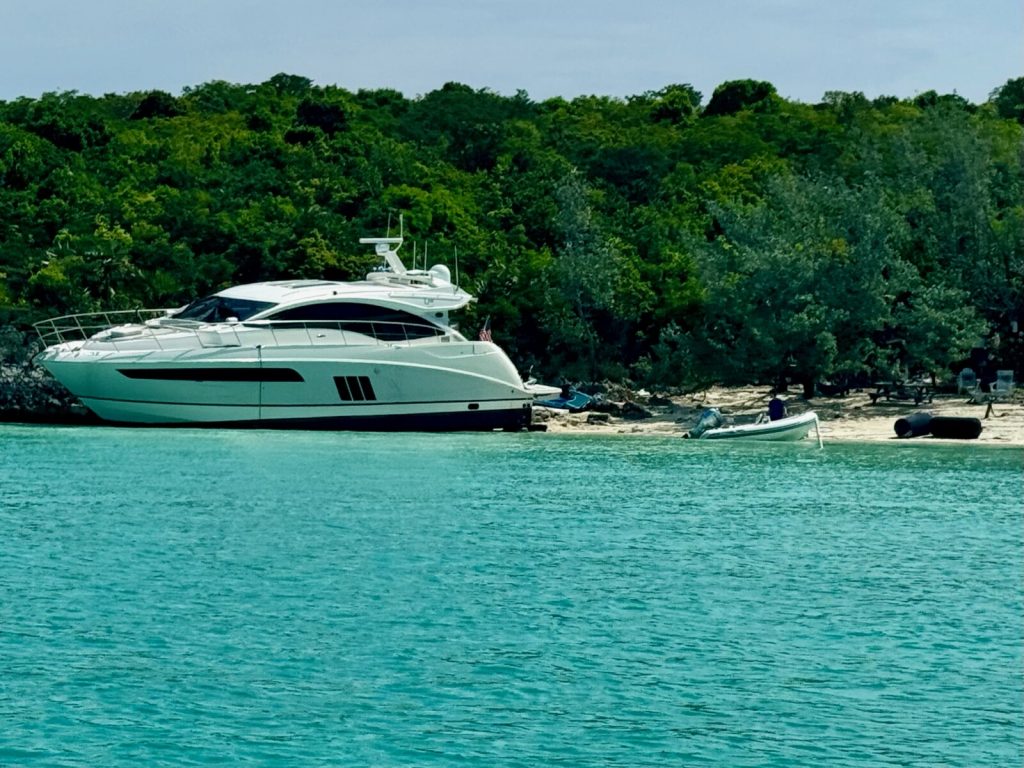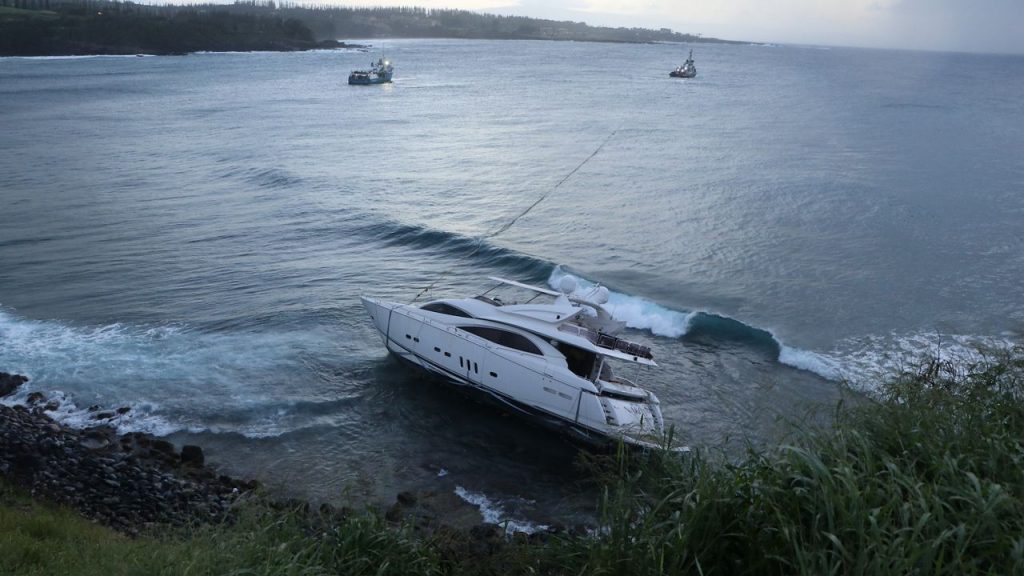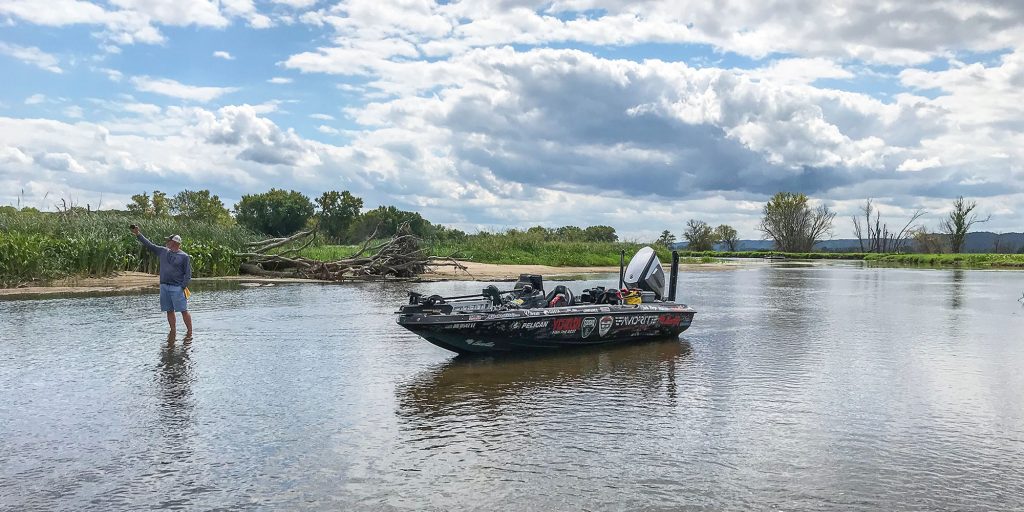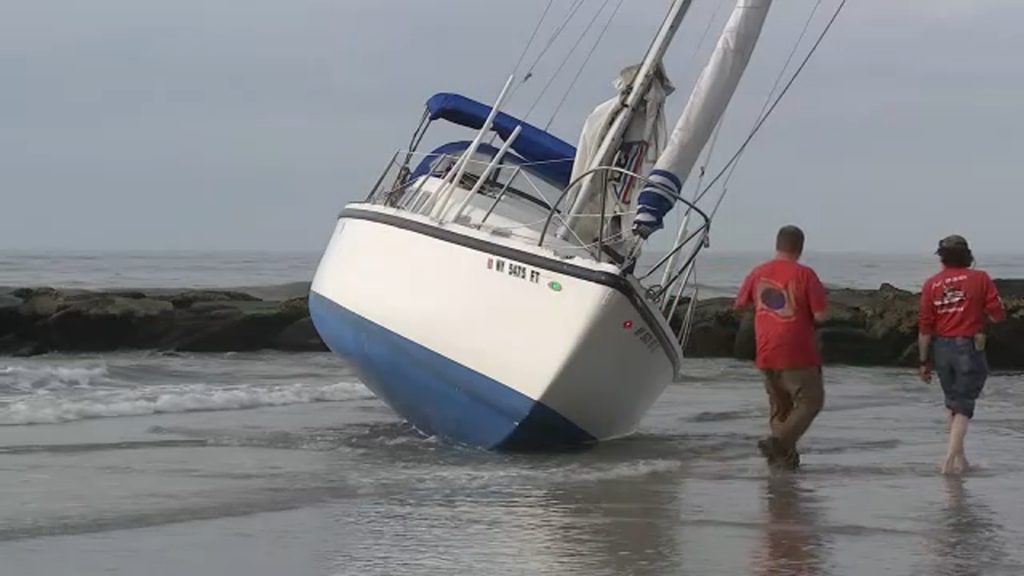What Should You Do After Your Boat Runs Aground and You Determine That There Are No Leaks? Immediate Steps for Safe Recovery
Running aground can be a scary experience for any boater. When your vessel hits bottom, the first priority is checking for leaks. Once you've confirmed there are no leaks, it's time to focus on getting your boat back into deeper water safely.

After determining there are no leaks, assess the situation and decide if you can free the boat on your own or if you need help.
Check the tide and weather conditions. If the tide is rising, you may be able to wait it out. If not, try shifting weight away from the grounded area or using your engine to gently back out the way you came in.
Don't try to force your boat free if it's stuck firmly. This could cause damage to the hull or propellers. If you can't get free on your own, it's best to call for professional assistance.

While waiting for help, make sure everyone on board is wearing a life jacket and stays calm.
Key Takeaways
- Check for leaks and injuries before attempting to free the boat
- Assess tide and weather conditions to determine the best course of action
- Call for professional help if you can't safely free the boat on your own
Initial Response
When a boat runs aground without leaks, swift action is key. The first steps focus on assessing the situation and keeping everyone safe.
Assess the Situation
Stop the engine right away. This prevents more damage to the boat. Lift the outdrive if possible.
Next, check the surroundings to figure out what type of ground the boat is stuck on. Is it sand, mud, or rocks?
Look for signs of damage to the hull. Even if there are no leaks, there could be other issues. Check the propeller and rudder for problems.
Try to determine how firmly the boat is stuck. This will help decide the best way to get free.

Ensure Passenger Safety
Make sure all passengers put on life jackets. This is important even if the boat seems stable.
Ask if anyone is hurt. Check for cuts, bruises, or other injuries from the impact. Treat any injuries right away.
Have passengers move away from the area of impact. Shift their weight to the part of the boat farthest from where it hit ground. This might help free the boat.
Keep everyone calm. Explain what's happening and what the next steps will be. Make sure no one tries to push the boat off without a plan.
Assessing the Boat
After running aground, a careful inspection of the boat is vital. This helps spot any hidden issues that could worsen if left unchecked. A thorough check can prevent further damage and keep everyone safe.
Inspect for Damage
Start with a visual check of the hull. Look for scratches, dents, or cracks. Pay extra attention to the keel and bottom areas that likely hit the ground.
Next, check the propeller and rudder for bends or breaks.
Examine the deck for any new cracks or warping. These could point to structural damage below.
Inside the boat, look for signs of stress like new cracks in fiberglass or loose fittings.
Don't forget to inspect the engine and outdrive. Make sure they're still secure and aligned properly.
Listen for unusual noises when you start the engine. These could signal internal damage.

Check for Leaks
Even if no leaks are visible at first, it's crucial to double-check. Start in the bilge area. Look for water coming in faster than usual. Use a flashlight to spot any drips or streams.
Next, check all through-hull fittings and seacocks. Make sure they're not loose or cracked.
Then, inspect around the propeller shaft and rudder post for signs of water entry.
Run your hand along the inside of the hull. Feel for dampness or coolness that might indicate a small leak.
Don't forget to check storage compartments and lockers for water.
If you spot any leaks, even small ones, address them right away. Use whatever materials you have on hand to plug the hole temporarily until you can get to shore for proper repairs.
Preventing Further Damage
Quick action can stop more harm to your boat after running aground. Shutting off the engine and securing the vessel are key first steps.
Disable the Engine if Necessary
Turn off the engine right away if it's still running. This stops sand and debris from getting sucked into the cooling system.
Check for odd noises or vibrations that could mean damage. Look at the propeller for bent blades or dings.
Don't try to power off using the engine, as this risks harming it more.
If the boat is taking on water, leave the engine off. Only restart it if you need to move to safer water. Watch for signs of overheating if you must run the motor.

Secure the Boat to Avoid Movement
Drop an anchor to keep the boat from drifting into deeper trouble. Set it away from the grounding spot. This helps when the tide changes.
Check the weather and water conditions. Strong winds or currents can push the boat harder onto the ground. They may also cause it to pivot, leading to more damage.
Use fenders if there are rocks nearby. Place them strategically to protect the hull from scrapes. Avoid tying up to fixed objects on shore, as the changing tide can cause issues.
Formulating a Plan
After running aground, stay calm and make a plan. Think about the tide, current, and safe ways to get unstuck. Smart choices now can prevent more problems later.
Consider the Tide and Current
Check if the tide is rising or falling. A rising tide can help lift the boat off the bottom. If the tide is going out, you might need to wait for it to come back in.
Look at the current. It can push the boat in helpful or unhelpful ways. A strong current might make it harder to move the boat.
Think about how the tide and current work together. They can affect your chances of getting free.

Explore Safe Exit Strategies
Try to figure out which way is deepest. This is often the best way to move the boat.
Think about using the engine in reverse. But be careful - this can sometimes push sand or mud under the boat.
Look for a channel nearby. It might be a good path to deeper water.
Consider if you need a tow. Sometimes it's safer to call for help than to try moving on your own.
Check if you can shift weight in the boat. Moving people or gear might help tip the boat enough to float free.
Remember, safety comes first. Don't try anything risky.
Execution of the Plan
Once you've checked for leaks and injuries, it's time to get your boat unstuck. The next steps focus on carefully maneuvering the boat off the ground.
Attempt to Reverse Off Safely
Start by trying to back the boat off gently. Turn off the engine first to avoid sucking in debris. Trim up the outboard or outdrive if possible. Look around to see which direction has the deepest water.
Put the boat in reverse and give it a little gas. Don't gun it - ease on the throttle slowly. If you feel resistance, stop. Forcing it could damage the boat.
If reversing doesn't work, try rocking the boat. Shift between forward and reverse gently. This might help break the suction holding you in place.

Shift Weight and Distribute Loads
Moving weight can help free your boat. Ask passengers to move to the side opposite where you're stuck. This tilts the boat and may lift the stuck part.
Take any heavy items and move them too. Coolers, gear, and even the dinghy can be shifted. Be careful not to overload one area.
Fill a bucket with water. Pour it on the side that's stuck. This extra weight might help pivot the boat free.
If you have an anchor, try setting it off the stern. Pull on the anchor line to create leverage. Go slow and steady to avoid jerking the boat.
When to Call for Help
Knowing when to seek assistance is crucial after a boat runs aground. Timing and proper communication can make a big difference in the outcome.
Communicate with Authorities
Use a VHF marine radio to contact authorities if you're stuck. Tune to Channel 16, the emergency frequency monitored by the U.S. Coast Guard. Give your location, boat details, and situation. Stay calm and speak clearly.
The Coast Guard can offer advice or send help if needed. They might ask you to switch to a different channel for more talk.
If you don't have a radio, use a cell phone to call for help. But remember, cell service can be spotty on the water.
Utilize Safety Equipment
Visual distress signals are key if you can't radio for help. Use flares, orange smoke signals, or flags to catch attention.
At night, use a flashlight or spotlight to signal SOS. Wave your arms if you see other boats nearby.
Turn on all your boat's lights to make yourself more visible. This helps rescuers find you faster.
If you have an emergency position-indicating radio beacon (EPIRB), activate it. This sends out a distress signal with your location.
Post-Grounding Steps
After a grounding incident with no leaks, take action to repair any damage and learn from the experience. These steps help prevent future problems and improve boating safety.
Repairing Your Boat
Check the hull for scratches or cracks. Look at the keel, rudder, and propeller for damage.
Clean off any mud or debris stuck to the bottom.
Take the boat to a marina for a full inspection. Experts can spot hidden issues.
They'll check the engine, transmission, and steering systems.
Replace damaged parts right away. Don't ignore small problems.
They can lead to bigger issues later. Keep a log of all repairs for insurance purposes.
Consider having the boat hauled out. This allows for a complete bottom inspection.
It's a good chance to repaint the hull if needed.

Learning from the Incident
Review what caused the grounding. Was it due to outdated charts? Poor visibility? Lack of attention?
Update your navigation tools. Get new charts or update your GPS.
Consider taking a boating safety course to brush up on skills.
Practice using depth finders and other equipment.
Know how to read water color changes that signal shallow areas.
Plan routes more carefully in the future. Leave extra room for tides and currents.
Always have a backup plan in case of unexpected obstacles.
Share your experience with other boaters. Your story might help someone avoid a similar situation.
Frequently Asked Questions
Running aground can be scary, but staying calm and taking the right steps is key. These questions cover what to do after grounding when there are no leaks.
What are the immediate steps to take following a grounding incident without hull breaches?
The first step is to make sure everyone on board is safe. Check for injuries and help anyone who needs it.
Next, turn off the engine and assess the situation. Look at the tide and water depth around the boat.
How should you assess your vessel's condition after grounding before taking further action?
Check the boat carefully for any damage. Look at the hull, propeller, and rudder.
Make sure there are no cracks or dents. Test all systems to see if they still work right.
What precautions are necessary when trying to refloat a grounded boat?
Don't try to power off in reverse. This can cause more damage.
Wait for high tide if possible. Shift weight away from the grounded area.
Use an anchor to pull the boat into deeper water if needed.
Once aground with no leaks, what measures should be taken to protect the boat and passengers?
Put on life jackets if not already wearing them. Drop an anchor to keep the boat from drifting into worse trouble.
Keep passengers in safe areas away from the edges of the boat.
What are the best practices for a skipper to follow after a vessel runs aground?
Stay calm and don't panic. Assess the situation fully before acting.
Contact the Coast Guard or local authorities if help is needed. Keep passengers informed about what's happening.
How can you prevent further damage to your boat after it has run aground?
Avoid running the engine or using the propeller. This can suck in sand or debris.
Don't try to rock the boat free. This may cause more damage.
Wait for professional help if unsure what to do.
Meet Charlie Hardcastle, the undisputed king of the sea, and Editor-in-chief of Sea Magazine. Charlie's passion for boating runs deeper than a kraken's lair, and his years of experience on the water make him the ultimate boating guru. When it comes to boats, Charlie's knowledge is as vast as the ocean. He knows everything from the latest technology to the best locations for water enthusiasts. But Charlie's expertise isn't just limited to boating mechanics and history. He's also a marketing whiz, with a keen understanding of how the industry is adapting to changing consumer preferences. He knows how to effectively reach new audiences, whether they're looking for a luxury yacht or a modest pontoon boat. In short, Charlie is the complete package, a one-stop-shop for all things boating. So if you're looking to learn about the latest technology, marketing strategies, or just want to hear some epic sea tales, Charlie Hardcastle is your guy.